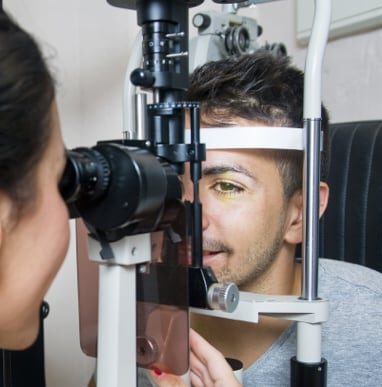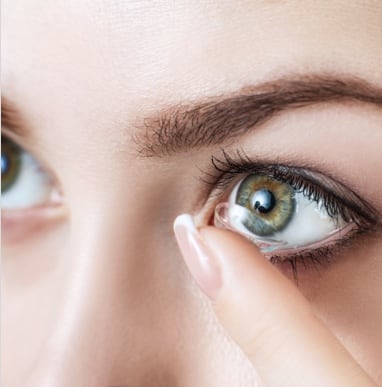
Time to explore two of the most common refractive errors: myopia and hyperopia!
Normally, Light Is Focused Directly Onto The Retina
Before we delve into what it means to be nearsighted or farsighted, let’s first talk about how a normal eye functions. Vision occurs when light enters the eye and, working together, the cornea and the lens refract light to focus onto a point at the very back of the eye called the retina. The retina converts this light into electrical impulses and sends them to your brain. Your brain then produces an image.
[iframe https://www.youtube.com/embed/i3_n3Ibfn1c?rel=0 620 349]
When there are imperfections in the eye that prevent light from being focused perfectly on the retina, a refractive error occurs.
The Way The Eye Is Shaped Can Determine Vision
Myopia
Myopia, commonly known as nearsightedness, affects nearly 30 percent of the U.S. population. It occurs when light is focused in front of the retina, instead of directly on it. This happens when the cornea is too curved or the eyeball is too long.
People who are nearsighted have an easy time reading, working on the computer and doing other close work. They struggle seeing when driving, reading a whiteboard at school, watching a movie or trying to identify faces from far away.
Hyperopia
When an eyeball is too short or the cornea isn’t curved enough, farsightedness–or hyperopia–is the result. This causes light to be focused behind the retina, making a farsighted person able to see far away but not close up. Only around 10 percent of Americans have hyperopia, making it much less widespread than myopia.
Those who are farsighted can easily read an eye chart, but may have trouble reading the text book right in front of them. Consequently, farsightedness is often missed in simple vision screenings performed at school. For your next eye exam, come in and get your eyes checked by an eye care professional. We’ll not only ascertain your visual acuity but we will also assure that every aspect of your vision health is taken care of.
Everyone Deserves To Have Good Vision
If you have frequent headaches or eyestrain, you may have a problem with your vision. If you already have glasses or contacts and experience similar symptoms, you may just need your prescription updated. So whether you’re coming in for some new frames, renewing your prescription, or suspect that something in your vision might be off, we’d love to see you in our office. It’s our philosophy that everyone deserves to have good vision!












